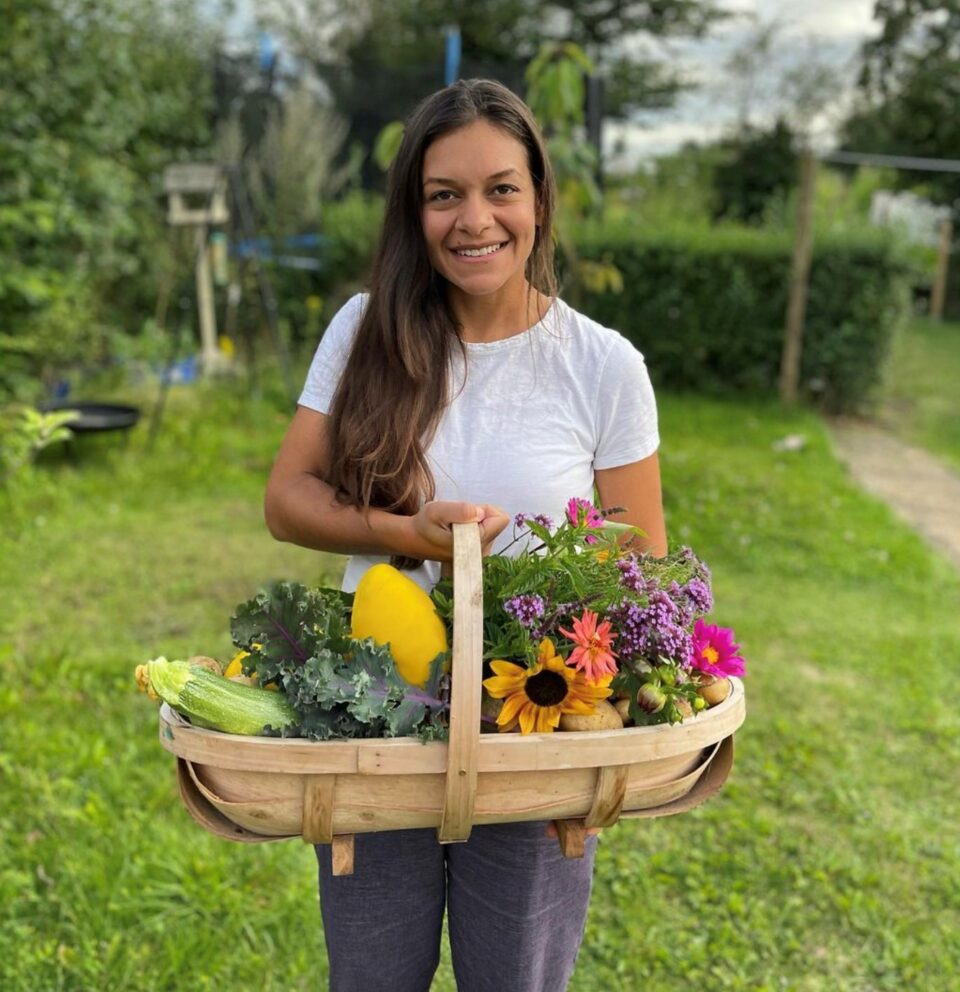With sustainability high on the list at this year’s Chelsea Flower Show, we invited Oxfordshire-based organic gardener and writer Jaime Johnson (aka @greenmamauk) to share her top tips for keeping your green space working with nature. And as all green gardeners know, a little help from eco-friendly products is often required…
May is such a busy month for the gardener. From all the potting on and nurturing of young specimens, to trying to keep on top of the lush green growth of the less desired plants popping up with gusto at this time of year, it can be quite overwhelming. And we’re all guilty of reaching for a quick and easy solution to some of the trickiest garden pests and problems we face in spring and summer. Thankfully there are some fantastic, sustainable solutions for all manner of garden woes and here are a few ideas to help bring harmony to an eco-friendly garden.
1. No Mow May
This is an annual campaign for increasing meadow habitat and allowing wildflowers to flourish. May is a key breeding month for many invertebrates, who look for long grassy meadows to complete their life cycle. As with all food chains, these insects are key for the survival of many much-loved larger animals and sadly their decline will naturally follow up-chain.
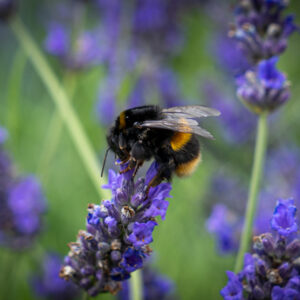
Pollinators also rely on the nectar from the truly native flowers that pop up when we allow them time to bloom. Every year, I allow parts of my lawn to grow long and lush; helping to support these creatures while mowed paths, allow my children (and puppy!) some fun new spots to play in the garden. There is nothing better than following a winding path spotting butterflies and bees, and no matter how small the space a little patch of long grass will massively increase the biodiversity in your outside area. An increase in biodiversity means that common garden pests like slugs are kept in-check as their natural predators (such as slow worms, hedgehogs and frogs) are encouraged into the area.
2. Upcycled, recycled and natural containers
I’ve lost count of the number of seeds I’ve sown and plants I’ve potted up this month. May is just the best time of year for propagation of many seeds, the days are warm, and the light is long – just what we need for healthy, happy seedlings. It can be a struggle though to find enough containers for it all and I find myself constantly rummaging through the recycling bin for more tubs and propagator- punnets! When I’m not upcycling my waste, I like to reach for more sustainable choices at the garden centre. There is unfortunately so much virgin plastic in many gardening products, so look for items that have been made using old bottles such as this windowsill propagator by Westland.
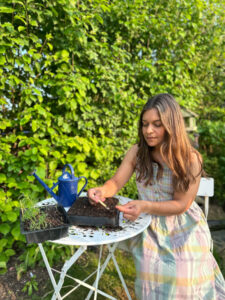
For potting on, I’m loving this natural rubber seed tray by Plastic Free Gardening. The cells are genuinely a great size for the seedlings of all sorts of plants and vegetables, and I love that it is Fair Trade and FSC certified and importantly, robust for several years’ use.
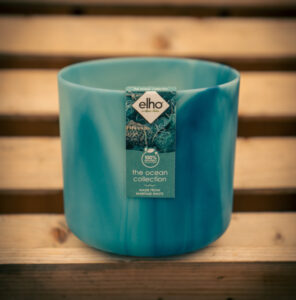
Similarly, for your houseplants, give one of these lovely pots from the Elho Ocean Collection a try. They are made from 100% recycled materials from maritime waste!
3. No more gnats!
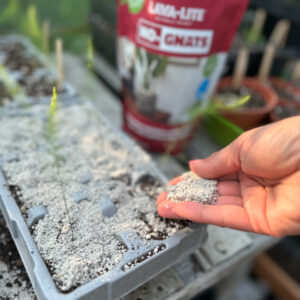 Fungus gnats are such a common problem in the greenhouse or potting shed. Overwintered plants waiting to find their spot out in the garden are especially at risk, and even houseplants can become a breeding ground for fungus gnats. No Gnats by Lava Lite works by capping of the soil – just like a mulch – preventing the pests from laying their eggs inside the compost. It’s a light, crumbly product and so it also supports a healthy potting mix, increasing drainage just like a horticultural grit would do. It also looks attractive and by providing the top of the pot with a layer it prevents water evaporation as well as making watering much less messy!
Fungus gnats are such a common problem in the greenhouse or potting shed. Overwintered plants waiting to find their spot out in the garden are especially at risk, and even houseplants can become a breeding ground for fungus gnats. No Gnats by Lava Lite works by capping of the soil – just like a mulch – preventing the pests from laying their eggs inside the compost. It’s a light, crumbly product and so it also supports a healthy potting mix, increasing drainage just like a horticultural grit would do. It also looks attractive and by providing the top of the pot with a layer it prevents water evaporation as well as making watering much less messy!
4. Make your own compost
A good compost, made from organic matter, is the life-blood of every garden. Whether you’re a traditional digger or no-dig mulcher, a rich and nutrient-dense compost is vital for giving back to the soil what we take away when growing our crops. I love making my own compost and it’s quite easy once you get the hang of it. The most important part is a good mix of greens and browns (with slightly more weight on the carbon-rich browns) to ensure a great texture. Most of us are giving away so many fantastic ingredients each week with our food and garden waste bins, why not put some of it to use with a compost pile? If a pile is not your thing, a ‘dalek’ style bin is a tidy, and often quicker, way of cooking your own compost. Perhaps start by saving up the grass clippings from your new ‘no mow May’ paths.
5. Log piles and frog lodges
Much like leaving sections of grass to grow long, creating other habitats such as log piles, can really help to bring those key predator species into your garden. Reptiles and amphibians love log piles to hide in and they will devour any slugs or snails causing you pain in the garden. It’s also a fantastic way to get children into nature and they will love turning over logs to find all manner of creatures hiding underneath.
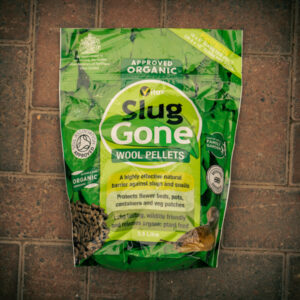
If you don’t have room for a log pile or need a quicker solution to slugs, try Slug Gone sustainable wool pellets as a barrier around your most precious plants. Young dahlias are especially at risk when being planted out this month, so sprinkling a small pile of wool pellets around the base of the plant (making sure that no low-hanging leaves create a helpful bridge!) can be a brilliant, safe and earth-friendly way to protect them.
6. Eco-friendly gardening tools
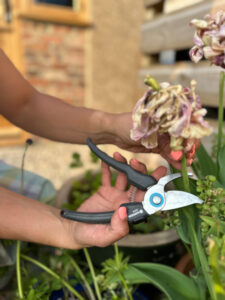
The most sustainable way to garden is to use what you already have or borrow from a kitted-out neighbour. That said, there are so many brilliant new innovations in the plastic-free garden revolution, and it is wonderful to be able to support eco-conscious brands. Gardena Ecoline Secateurs are fantastic for all the snipping, pinching-out and pruning I’ve got to do over the next few weeks, and it’s wonderful to know that they were made with the planet in mind. Made from 75% recycled plastic, even the packaging is sustainable with a metal screw holding the tool to a piece of printed brown cardboard.
Now, all that’s left to do is to start gardening!

